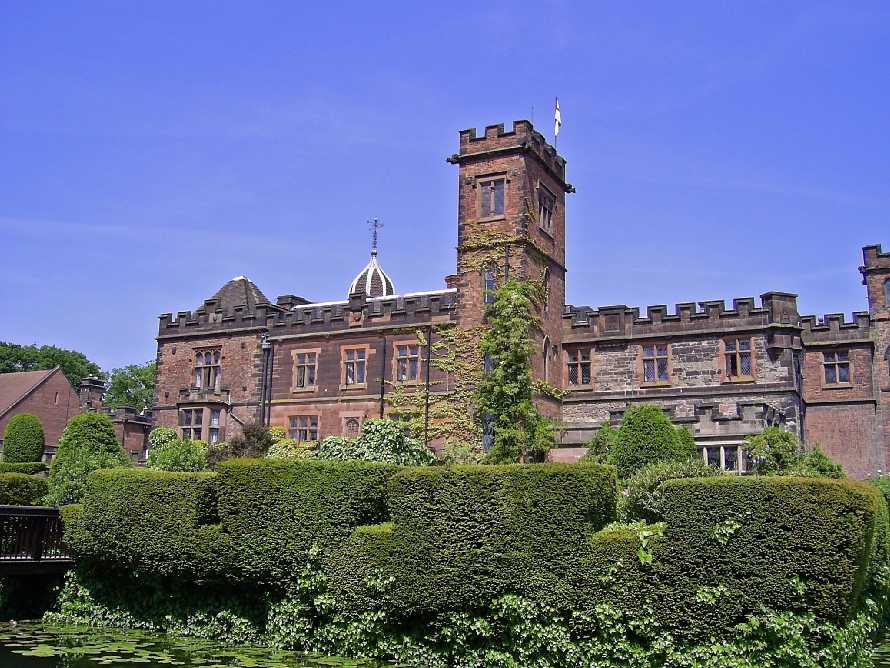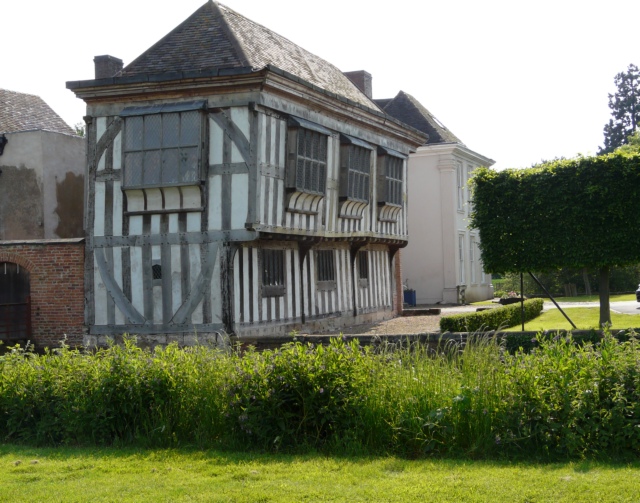|
High Steward Of Sutton Coldfield
The High Steward of Sutton Coldfield was an office relating to the government of the town of Sutton Coldfield, Warwickshire, England. History Prior to the Royal Charter of 1528 Walter Devereux, Lord Ferrers of Chartley held the office of High Steward under the Crown. He also held office as Bailiff of the Manor, Keeper of the Rolls and Keeper of Coldfield Walk. The salaries for these posts, under a grant of 1525, were to be paid at the rate of £16 a year to him and his son Henry for life. On the granting of the Charter the town was to be held by a Warden and Society (roughly equivalent to Mayor and Corporation) and the inhabitants of the town. The Charter granted the right to appoint a High Steward, although this right was not exercised until 1547. The High Stewards were appointed for life and were to be entitled to a Deputy to assist in the duty of holding courts. At least in the 16th century, the High Steward was expected to have a knowledge of English law; but the role soon b ... [...More Info...] [...Related Items...] OR: [Wikipedia] [Google] [Baidu] |
Sutton Coldfield
Sutton Coldfield or the Royal Town of Sutton Coldfield, known locally as Sutton ( ), is a town and civil parish in the City of Birmingham, West Midlands, England. The town lies around 8 miles northeast of Birmingham city centre, 9 miles south of Lichfield, 7 miles southwest of Tamworth and 7 miles east of Walsall. Sutton Coldfield and its surrounding suburbs are governed under Birmingham City Council for local government purposes but the town has its own town council which governs the town and its surrounding areas by running local services and electing a mayor to the council. It is in the Historic county of Warwickshire, and in 1974 it became part of Birmingham and the West Midlands metropolitan county under the Local Government Act 1972. History Etymology The etymology of the name Sutton appears to be from "South Town". The name "Sutton Coldfield" appears to come from this time, being the "south town" (i.e. south of Tamworth and/or Lichfield) on the edge of ... [...More Info...] [...Related Items...] OR: [Wikipedia] [Google] [Baidu] |
Henry Willoughby, 6th Baron Middleton
Henry Willoughby, 6th Baron Middleton (24 April 1761 – 19 June 1835), was an English nobleman, the only son of Henry Willoughby, 5th Baron Middleton. He married Jane Lawley, daughter of Sir Robert Lawley, 5th Baronet, and lived in the family seat at Wollaton Park, Nottinghamshire, which he had extensively remodeled under the direction of Sir Jeffry Wyattville. Lord Middleton was a keen fox hunter and was a regular follower of the Warwickshire Hunt. In 1811, he purchased the pack from the hunt's founder John Corbet, for 1,200 guineas. He remained the hunt's Master until 1821, when following a fall from his favourite horse ''Billy Button'', he passed on the mastership to Evelyn Shirley of Ettington Hall.John Cooper "Venator", ''The Warwickshire from 1795 to 1836'', John Cooper, Warwick, 1873. Lord Middleton had no legitimate children. He was believed to have been the father of Rev Henry Charles Knight (1813–1887), the son of Hon. Frances Knight, who had long been separat ... [...More Info...] [...Related Items...] OR: [Wikipedia] [Google] [Baidu] |
Heneage Finch, 4th Earl Of Aylesford
Heneage Finch, 4th Earl of Aylesford, PC, FRS, FSA (4 July 1751 – 21 October 1812), styled Lord Guernsey between 1757 and 1777, was a British politician who sat in the House of Commons from 1772 to 1777 when he succeeded to a peerage. He was also a landscape artist. Background and education Aylesford was the son of Heneage Finch, 3rd Earl of Aylesford, and Lady Charlotte Finch, daughter of Charles Seymour, 6th Duke of Somerset. He was born at his paternal grandfather's residence, Syon House, near London. He was educated at Christ Church, Oxford. Political career Aylesford was returned to parliament for Castle Rising in 1772, a seat he held until 1774, and then represented Maidstone until 1777,when he succeeded his father in the earldom and entered the House of Lords. He was a Lord of the Bedchamber to George III between 1777 and 1783. The latter year he was sworn of the Privy Council and appointed Captain of the Yeomen of the Guard by William Pitt the Younger. He r ... [...More Info...] [...Related Items...] OR: [Wikipedia] [Google] [Baidu] |
Marquess Of Bath
Marquess of Bath is a title in the Peerage of Great Britain. It was created in 1789 for Thomas Thynne, 3rd Viscount Weymouth. The Marquess holds the subsidiary titles Baron Thynne, of Warminster in the County of Wiltshire, and Viscount Weymouth, both created in 1682 in the Peerage of England. He is also a baronet in the Baronetage of England. Family history until 1800 The Thynne family descends from the soldier and courtier Sir John Thynne (died 1580), who constructed Longleat House between 1567 and 1579. In 1641 his great-grandson Henry Frederick Thynne was created a Baronet, of Caus Castle, in the Baronetage of England (some sources claim that the territorial designation is "Kempsford in the County of Gloucester"). He was succeeded by his son, the second Baronet. He represented Oxford University and Tamworth in the House of Commons and also served as Envoy to Sweden. In 1682 he was raised to the Peerage of England as Baron Thynne, of Warminster in the County of Wilts, an ... [...More Info...] [...Related Items...] OR: [Wikipedia] [Google] [Baidu] |
Thomas Thynne, 1st Marquess Of Bath
Thomas Thynne, 1st Marquess of Bath, KG, PC (13 September 173419 November 1796), of Longleat in Wiltshire, was a British politician who held office under King George III. He served as Southern Secretary, Northern Secretary and Lord Lieutenant of Ireland. Between 1751 and 1789, he was known as the 3rd Viscount Weymouth. He is possibly best known for his role in the Falklands Crisis of 1770. Early life He was born on 13 September 1734, the eldest son and heir of Thomas Thynne, 2nd Viscount Weymouth (1710–1751) by his wife Louisa Carteret (c. 1712–1736), a daughter of John Carteret, 2nd Earl Granville, 2nd Baron Carteret (1690–1763). On her father's side, she was a great-granddaughter of John Granville, 1st Earl of Bath (1628–1701), and her father's first-cousin was William Granville, 3rd Earl of Bath (1692–1711), on whose death the Earldom of Bath became extinct. Family origins The Thynnes are descended from Sir John Thynne (c. 1515–1580), the builde ... [...More Info...] [...Related Items...] OR: [Wikipedia] [Google] [Baidu] |
Thomas Willoughby, 4th Baron Middleton
Thomas Willoughby, 4th Baron Middleton (19 December 1728 – 2 November 1781), was a British politician who sat in the House of Commons from 1762 to 1774, when he succeeded to the peerage as Baron Middleton. Willoughby was the second son of Francis Willoughby, 2nd Baron Middleton. He was educated at Bury St Edmund's School, and entered Jesus College, Cambridge, in 1745. Willoughby was returned unopposed as Member of Parliament for Nottinghamshire at a by-election on 13 December 1762. He was returned unopposed again at the general elections of 1768 and 1774. When his brother died on 16 December 1774 he succeeded to the Barony and was called to the House of Lords. He married Georgina, daughter of Evelyn Chadwick of West Leake, Nottinghamshire, in 1770 and lived in the family seat at Wollaton Park, Nottinghamshire. They had no children and was succeeded in the barony and estates by his cousin, Henry Willoughby, 5th Baron Middleton Henry Willoughby, 5th Baron Middleton (19 De ... [...More Info...] [...Related Items...] OR: [Wikipedia] [Google] [Baidu] |
Francis Willoughby, 3rd Baron Middleton
Francis Willoughby, 3rd Baron Middleton (25 January 1726 – 16 December 1774), was an English nobleman, the eldest son of Francis Willoughby, 2nd Baron Middleton. He was educated at Bury St Edmund's School, and entered Jesus College, Cambridge, in 1744. He succeeded his father in 1768, inheriting the family seat at Wollaton Park, Nottinghamshire, where he subsequently lived. He died unmarried and was succeeded by his younger brother, Thomas Willoughby, 4th Baron Middleton Thomas Willoughby, 4th Baron Middleton (19 December 1728 – 2 November 1781), was a British politician who sat in the House of Commons from 1762 to 1774, when he succeeded to the peerage as Baron Middleton. Willoughby was the second son of Fr .... References 1726 births 1774 deaths Alumni of Jesus College, Cambridge Francis 3 {{GB-baron-stub ... [...More Info...] [...Related Items...] OR: [Wikipedia] [Google] [Baidu] |
Francis Willoughby, 2nd Baron Middleton
Francis Willoughby, 2nd Baron Middleton (4 October 1692 – 31 July 1758), was a British politician who sat in the House of Commons from 1713 to 1727. He succeeded to a barony in the Peerage of Great Britain. He was born the eldest son of Thomas Willoughby, 1st Baron Middleton, and Elizabeth, the daughter and coheiress of Sir Richard Rothwell, 1st Bt. He was the brother of Hon. Thomas Willoughby, MP. He was educated at Eton and at Jesus College, Cambridge, graduating MA in 1712. He was returned as Member of Parliament for Nottinghamshire at the general elections of 1713 and 1715 Events For dates within Great Britain and the British Empire, as well as in the Russian Empire, the "old style" Julian calendar was used in 1715, and can be converted to the "new style" Gregorian calendar (adopted in the British Empire i .... At the 1722 general election he was returned as MP for Tamworth until 1727. He succeeded to the barony on his father's death in 1729, and inhe ... [...More Info...] [...Related Items...] OR: [Wikipedia] [Google] [Baidu] |
Thomas Willoughby, 1st Baron Middleton
Thomas Willoughby, 1st Baron Middleton (9 April 1672 – 2 April 1729), was a Tory politician who sat in the English and British House of Commons between 1698 and 1711 when he was raised to the peerage as Baron Middleton as one of Harley's Dozen. Early life Willoughby was born at Middleton Hall, Middleton, Warwickshire, the second son of Francis Willughby and his wife Emma Barnard, daughter of Sir Henry Barnard, merchant, of London and Bridgnorth, Shropshire. His father, who preferred to use this aberrant spelling of the family name, was a mathematician and naturalist but died shortly after his son's birth. In August 1676, Willoughby's mother married Sir Josiah Child, 1st Baronet, MP, and the family moved to Wanstead in Essex. His elder brother, Francis, decided Willoughby should go to Cambridge and he was admitted at St Catharine's College, Cambridge on 10 July 1683. He subsequently transferred to Jesus College, Cambridge on 4 May 1685, where he was under the tutorship of Dr ... [...More Info...] [...Related Items...] OR: [Wikipedia] [Google] [Baidu] |



